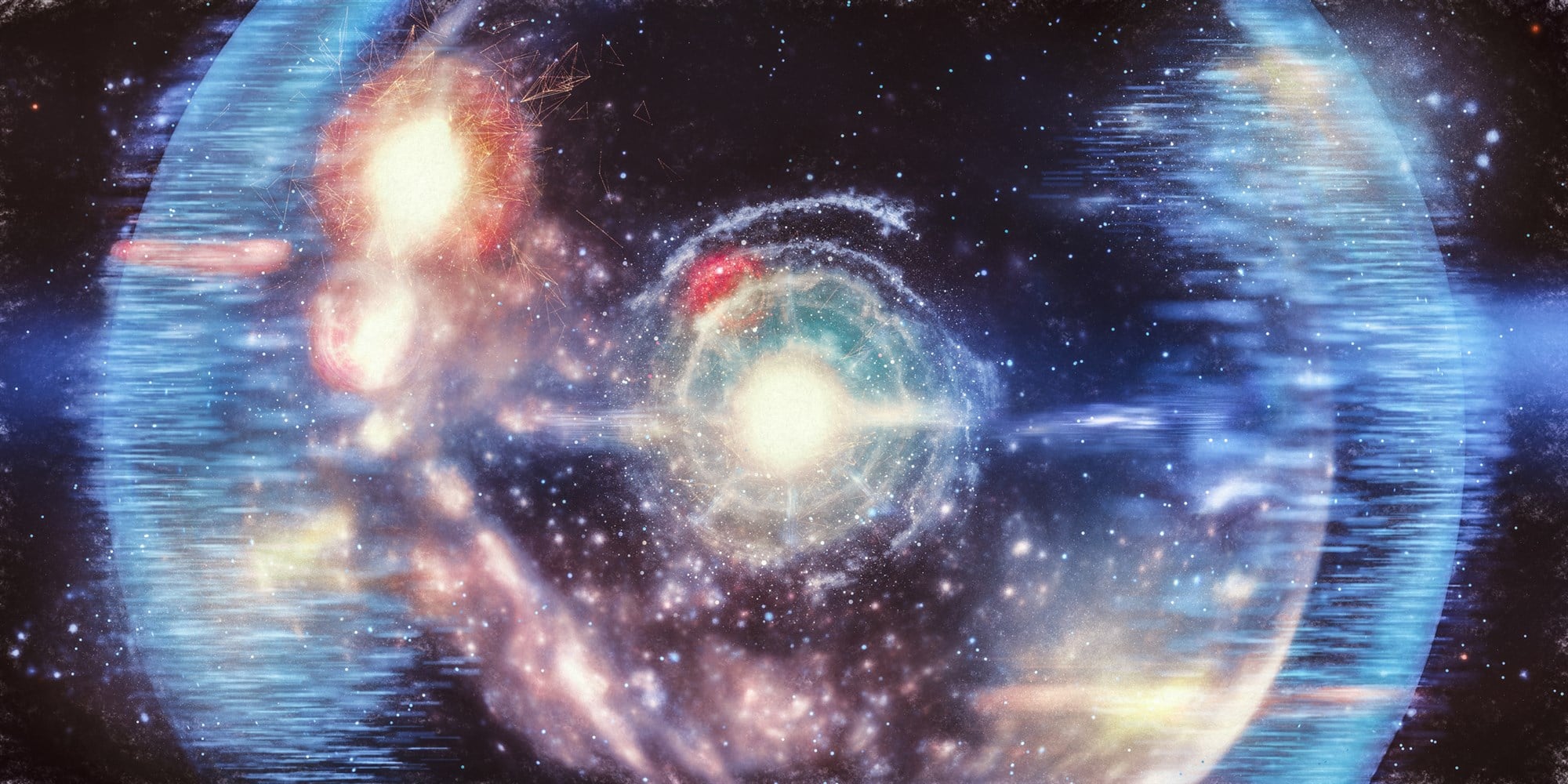בְּרֵאשִׁית בָּרָא
Genesis 1:1
The Torah starts with two words—Bereshit bara—“In the beginning, G‑d created…” (or, as Rashi translates it, “At the beginning of creation by G-d…”) Bereshit in Hebrew means “in the beginning,” and bara means “created.” What is interesting is that both words begin with the same letter, bet, the equivalent of b.
Another two-word expression that describes the process of creation and each of whose two words also starts with the letter b is, of course, the Big Bang. While this linguistic parallel may be a coincidence, the parallel between the biblical cosmogeny as understood by classical biblical commentators and the Big Bang is unmistakable.
An early rabbinic source, midrash Tanchumah (c. 8-9 CE) states that when G-d created the world it was not even as big as the black center of an eye (dok ha’ayin). (Tanchuma on Leviticus 8:3.) This is a poetic way of stating that at beginning of the creation, the size of the universe was extremely small.
One of the most important biblical commentators and Kabbalists, Nachmanides (Rabbi Moses ben Naḥman Girondi, known by the Hebrew acronym Ramban, 1194–1270), characterized the size of the universe to be smaller than “a grain of mustard.” (Kitvei Ramban, Mossad HaRav Kook, Jerusalem, p. 156) In the Talmud and Rabbinic literature, a grain of mustard was often used as a euphemism for something very small indeed.
The clearest description of the infinitesimal smallness of the universe is found in the Nachmanides commentary on the first verse of Genesis:
He brought forth from total and absolute nothing a very thin substance devoid of corporeality but having a power of potency, fit to assume form and to proceed from potentiality into reality . . . . The simple correct explanation of the verse is as follows: Now with this creation, which was like a very small point having no substance, everything in the heavens and on the earth was created.
Ramban Al HaTorah 1:1
Indeed, the Big Bang cosmology describes the universe at the first moment as a point-like singularity—the very language used by Nachmanides.
Furthermore, Nachmanides’s description of the early universe as “a very thin substance devoid of corporeality but having a power of potency” hints at the undifferentiated energy produced at the beginning of the Big Bang, which only later split into four fundamental forces—gravity, electromagnetism, strong nuclear force, and weak force—and form first elementary particles. According to Rashi (Rabbi Shlomo Yitzchaki), the first act of creation described in the first three verses of Genesis is the creation of light: “At the beginning of creation . . . . G-d said, “Let there be light”). Light here serves as a euphemism for pure energy.
The history of science attributes the concept of the Big Bang to four twentieth-century scientists: Russian mathematician Alexander Friedmann, who in 1922 found a solution to Einstein’s field equations in the General Theory of Relativity leading to the expansion of the universe; Belgian astronomer Georges Lemaître, who independently showed that the universe was expanding and confirmed it by astronomical observation in 1927, and who proposed what later became known as the Big Bang, calling it a “primeval atom” or “cosmic egg”; American astronomer Edwin Hubble, who first saw distant stars and galaxies receding from each other at speeds proportional to their distance from each other, as if the universe was expanding; and British astronomer Fred Hoyle, who in 1949 coined the phrase “Big Bang.” I think it would only be fair if the history of science reflected the fact that the first functional description of the Big Bang was put forward some seven centuries earlier by the Jewish Kabbalist and Biblical commentator Nachmanides.
I do not suggest that Fred Hoyle, when he coined the phrase “Big Bang,” had in mind the Hebrew Bible beginning with Bereshit bara. However, Divine Providence (hashgachah pratit) saw to it that the Big Bang hints at Bereshit bara. Or the other way around, if you prefer.


SPIRAL cosmological redshift hypothesis includes a big bang ID-YeC cosmology model that aligns just not with the Torah narrative and 5,777 AM physical universe to date time line but attests to it.
see a recent peer review edition ‘distant starlight and Torah’
aka ‘distant starlight and the age, formation and structure of the universe’.
happy chodesh Chesvan,
rmp
The gematria of “Big Bang” (ביג בנג) when spelled in full in Hebrew (בית יוד גימל בית נון גימל) is 1116.
This is the gematria of “בראשית ברא”
We shouldn’t really play with gematrias of transliterations in this way, but in this case, it’s irresistible…
(Rabbi Yitzchak Ginsburgh, shlit”a)
Hello,
very interesting! I’d like to know where is the citation of Ramban from? (which book)
Thank you
Ramban al HaTorah on Bereshit.
The connection Big Bang to Breisheit Bara popped into my head today while listening to Brian Greene on Joe Rogan. Was wondering if anyone else thought of that too. I should have known you would beat me to the connection!
According to Rav Simshon Raphael Hirsch the word “Ruach” means the energy that expands the space. So the verse vruach merachefet al penaiy hamayim can be translate as the energy, which expands space moved quickly to affect the plasma (externally and internally).
Hi,
could you direct me to the exact Hebrew source for the words mentioned above in the name of the Ramban. The English translation doesn’t match anything I see in his words on the first pasuk in Bereshis.
You are right, the translation was in error and has now been corrected. The comparison of the hyly to the grain of mustard was not in Chumash Commentary Ramban Al HaTorah, but in his sermon containing his published commentary almost verbatim with this addition. See Kisvei Ramban, Mossad HaRav Kook, Jerusalem, p. 156. I thank you for bringing the error to my attention!